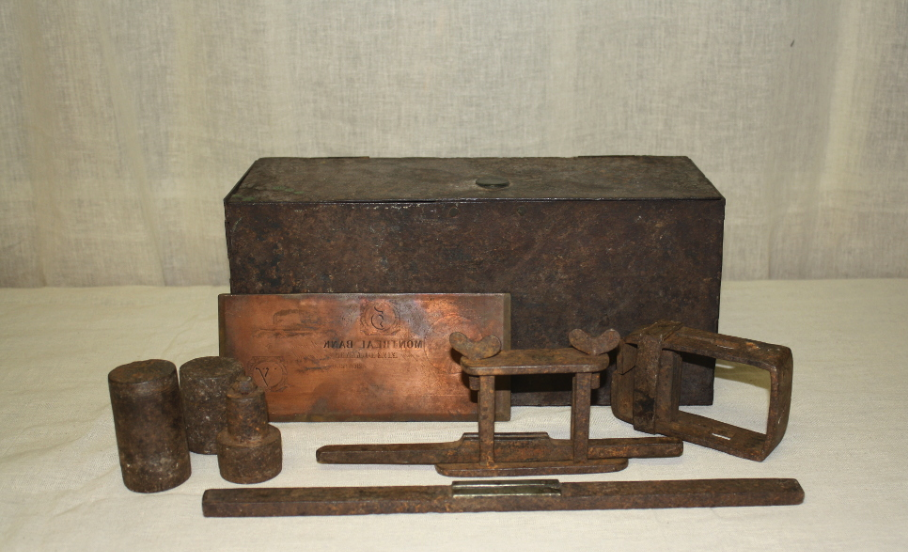Dunham’s first cottage industry was a real money maker
People often speak dismissively of our history, no doubt fuelled by that teacher who recited names and dates, making sure to never stray too far from the established curriculum. History is something that happened elsewhere, written by and for kings, leaders and generals who dictated the terms of victory, or rarely, accepted defeat.
But history is so much more than that. It is the lived experiences of people just like you and me, who worked hard, often died young and struggled, not merely to be successful, but just to survive. While I love history, I hold no illusions about “the good old days.” Like many of you, I’m alive because of medical science and modern prosperity. I’ve never had scurvy, tuberculosis, or faced the threat of starvation. It might not seem like it, but we live in the best time to be alive.
As a storyteller though, I love history. I love imagining myself not in the shoes of Napoleon or Churchill, but in the well-worn leather boots of more regular folks. And if there’s one man I’d love to do an interview with, and who refutes the Townships myth of “nothing interesting ever happened here,” it would be Dunham’s counterfeiting king, Seneca Paige.
Before we dive into Paige’s life, a quick bit of background: In the early days of the United States there wasn’t a single US currency. Instead, banks issued notes that served as legal tender. These notes varied greatly in style and substance, and early settlers with an artistic flair often set out to recreate them, trading them for legitimate cash, gold, or using them to buy supplies. Counterfeiting was illegal in the US, but north of the border, making fake US bank notes wasn’t against the law. Having come from the States, some of the new settlers seized upon an opportunity, and a border that was, for the most part, still an imaginary construct.
Born in Hardwick, Massachusetts in 1788, Paige was a slippery critter from the get-go. He got busted in Jersey City in 1809 for passing a fake dollar bank note, but got out of that one. Then after being arrested for counterfeiting in Baltimore in 1812 he escaped custody. He got caught again in 1816 and managed an escape yet again. That’s when he moved to Cogniac Street in Dunham.
Not much of a street, barely even a road, stretching from near Selby Lake to North Sutton, Cogniac Street, now known as Hudon Road, became the counterfeiting capital of North America in the early 1800’s. And it’s here that our intrepid Mr. Paige really came into his own.
Paige built up a counterfeiting network of printers, engravers, couriers, and various folks all looking to cash in on counterfeit craze. Known officially as a wood merchant and building contractor, his main focus was making money. Lots of money.

The counterfeiter’s tool kit.
But there were others on Cogniac Street that he had to deal with. Ebenezer Gleason was an illiterate but clever man with a gang of funny money makers of his own. In a region and time where survival was a daily concern for most, Gleason prospered. Seemingly he saw the benefit of working for Paige and his people, contenting himself to playing second fiddle.
Not so for Turner Wing and his gang. In 1824 Wing led his gang of thugs, armed with pistols and swords, down the road to Paige’s lair. They hauled away about $4 000 in bank notes, copper plates, printing equipment and even a few of Paige’s crew, including his dear old dad, who ran the presses. Nobody messes with dad and gets away with it, so Paige and Gleason locked and loaded and paid the Wing crew a visit. By the time the dust settled all was returned, including dad, and Wing was allowed to continue his business, on a reduced scale.
Where were the cops, you might ask. This being early days, there wasn’t much for law enforcement. There was pretty much just Ephraim Knight, Bailiff for the District of Bedford. Knight tried his best, getting little more than the occasional beating and regular torment from the counterfeiters, known far and wide by now as Cogniackers.
By 1833 however, the tide began to turn, and the laws began to catch up. That summer an assortment of law enforcement types from both sides of the border surrounded and raided the Wing and Gleason compounds, hauling away large sums of legal and illegal tender, printing equipment and chemicals, and arresting thirteen people, including Ebenezer Gleason and four of his sons. Hauled to Montreal, they were all convicted, but only spent two years behind bars.
Walking between the raindrops once again was Paige, who was never convicted of a crime north of the border. But what does a criminal do when the counterfeiting business goes into decline? For Seneca Paige, politics, of course. He was given a large tract of land by the Crown, served a stint as a Justice of the Peace, and then in 1851 he became the Member of the Legislative Assembly for Missisquoi in the Province of Canada. He even has his own National Assembly web page, which makes no mention of his checkered past.
Today the Cogniac Street counterfeiters are all buried in one of the several cemeteries along Hudon Road. Ebenezer Gleason is in the Harvey Cemetery, Turner Wing in the tiny cemetery that bears the family name. Various others, little known or entirely forgotten, sprinkled amongst the more faithful in the Dunham East or Farnam’s Corner cemeteries.
But not Seneca Paige. He died in 1856 at the age of 68. Finally safe to return to the US, he was buried in Bakersfield, in Franklin County, Vermont. His tombstone states: “His Loss will be felt by many; particularly by the poor. He was truly the poor man’s friend.”
